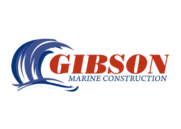Seawalls 101
A seawall, also known as a bulkhead or retaining wall, keeps the water from eroding the soil back into the water. Each seawall project has its own set of unique requirements. The stability of any seawall is dependent upon variables such as wall height, sheet pile length and strength, wale system, backfill, foundation soil and tide.
Homeowners and developers are looking at new ways to protect their properties due to the frequency of storms and hurricanes. The challenges of owning waterfront property include storm surges causing erosion, UV damage to traditional materials, corrosion of aluminum and steel, and deterioration caused by marine borers that thrive on pressure-treated lumber.
A seawall is an invaluable structure for those homeowners who live close to the water and rely on the wall to protect their homes from water damage. The constant ground movements and battering of the wall by the elements can often lead to unsightly cracks and a pitted surface. Once you see an area of your seawall starting to fail, it’s time to get it repaired. Putting it off will only cost you more in the long run.
For more information, checkout our dedicated Seawalls Page here.

